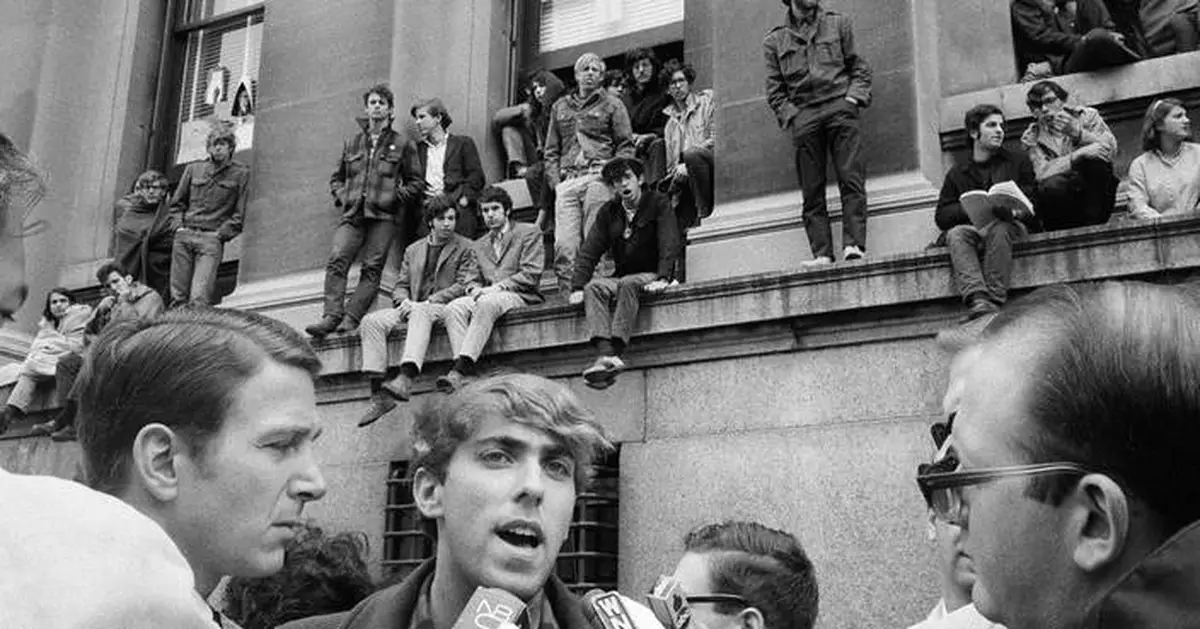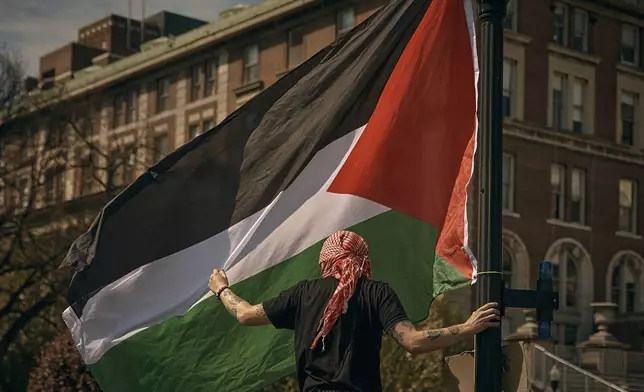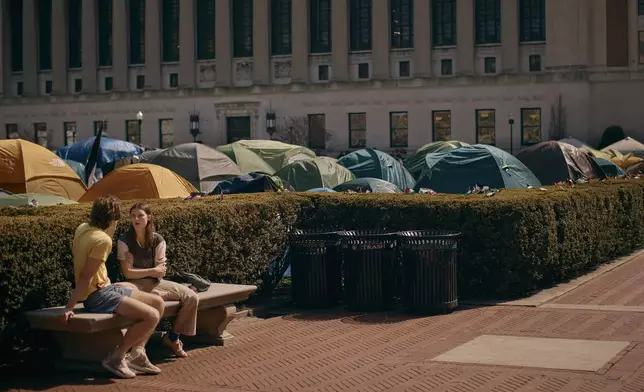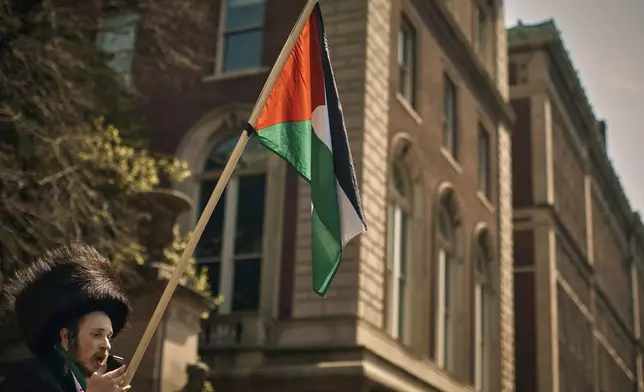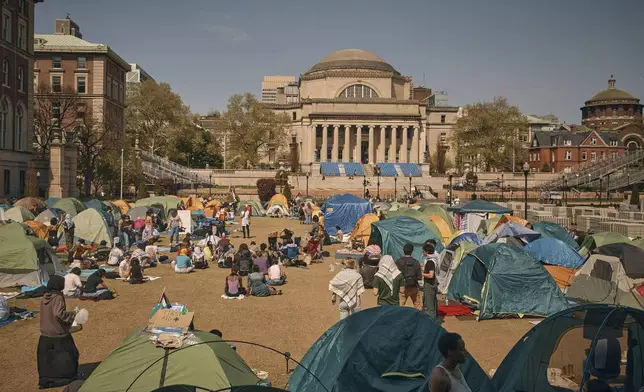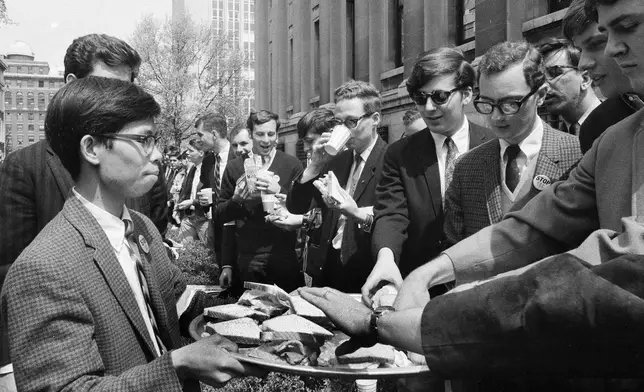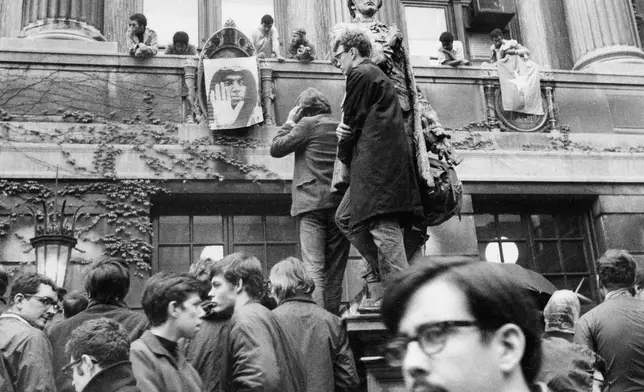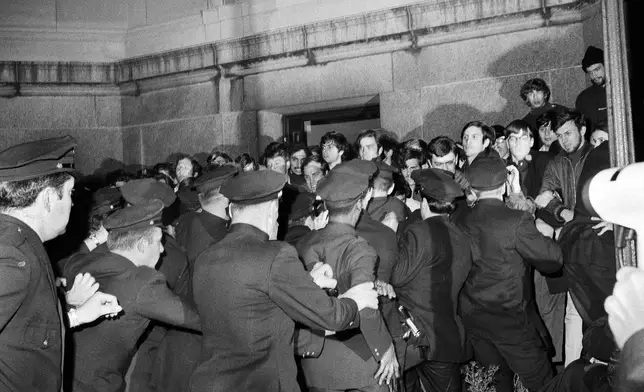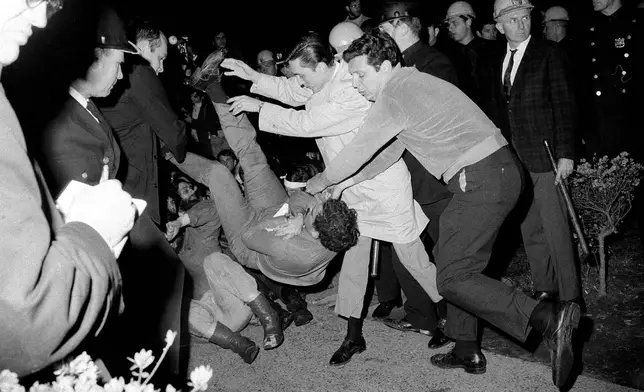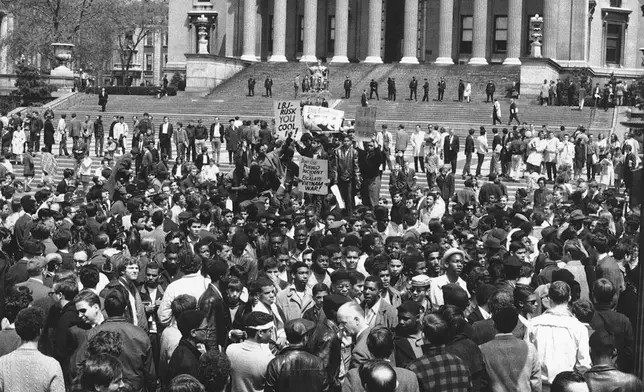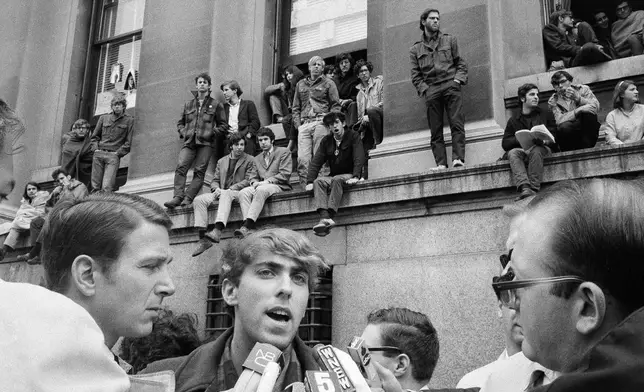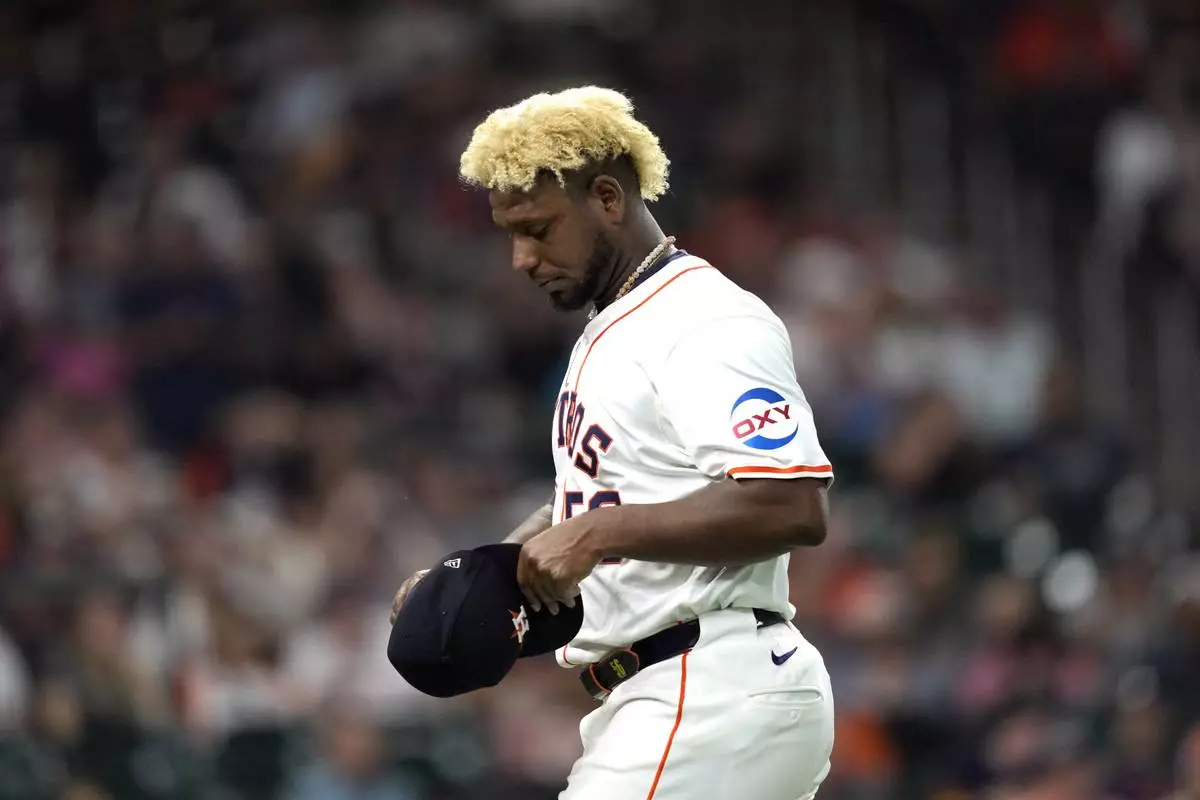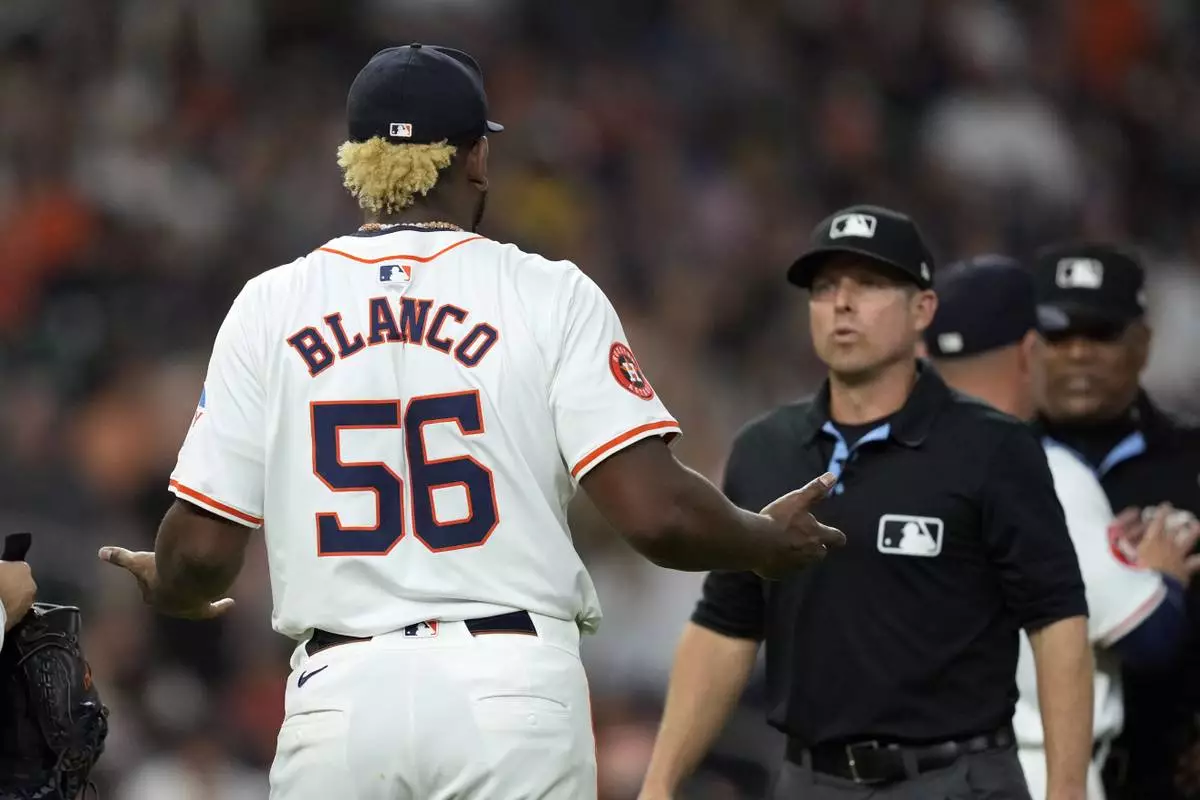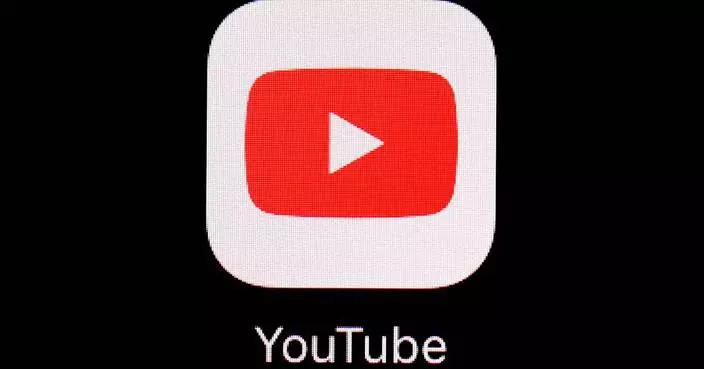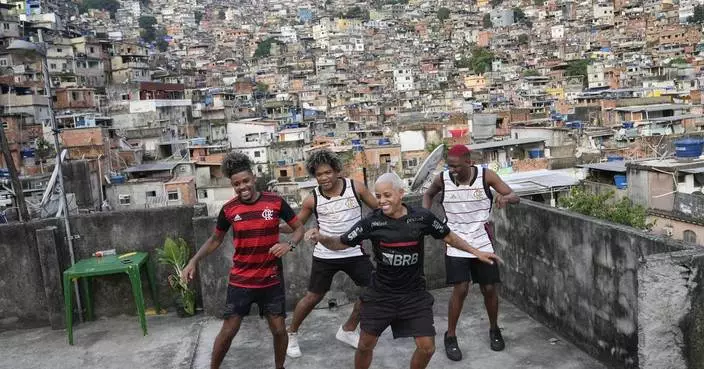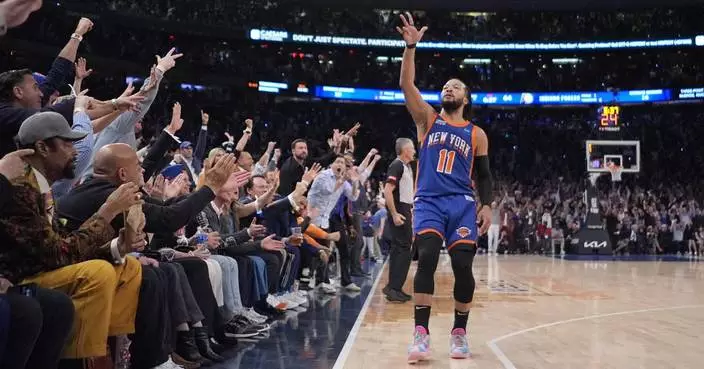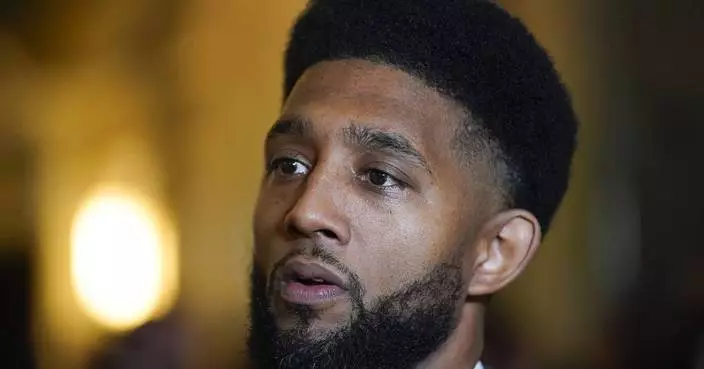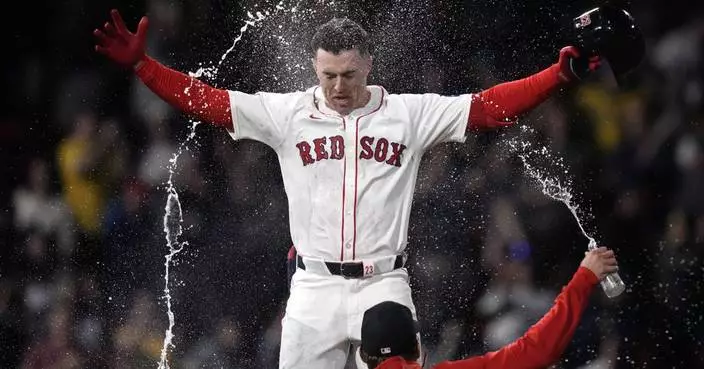NEW YORK (AP) — College students taking up space and making demands for change. University administrators facing pressure to get things back under control. Police brought in to make arrests. At other schools: students taking note, and sometimes taking action.
Columbia University, 2024. And Columbia University, 1968.
The pro-Palestinian demonstration and subsequent arrests at Columbia that have set off similar protests at campuses nationwide these days and even internationally aren't new ground for students at the Ivy League school. They're the latest in a Columbia tradition that dates back more than five decades — one that also helped provide inspiration for the anti-apartheid protest of the 1980s, the Iraq war protests, and more.
“When you’re going to Columbia, you know you’re going to an institution which has an honored place in the history of American protest,” said Mark Naison, professor of history and African & African American Studies at Fordham University and himself a participant in the 1968 demonstrations. “Whenever there is a movement, you know Columbia is going to be right there.”
It's part of Columbia's lore, students taking part in this month's demonstrations point out — recognized by the school itself in commemorative anniversary programming and taught about in classes.
“A lot of students here are aware of what happened in 1968,” said Sofia Ongele, 23, among those who joined the encampment in response to this month's arrests.
The end of an academic year was also approaching in April of that year when students took over five campus buildings. There were multiple reasons. Some were protesting the university’s connection to an institute doing weapon research for the Vietnam War; others opposed how the elite school treated Black and brown residents in the community around the school as well as the atmosphere for minority students.
After several days, Columbia’s president allowed a thousand New York Police Department officers to be brought in to clear most demonstrators out. The arrests, 700 of them, were not gentle. Fists were flying, clubs swinging. Dozens of students and more than a dozen officers were injured.
It’s never been forgotten history. That includes now, when pro-Palestinian students calling on the university to divest from any economic ties to Israel over the war in Gaza set up a tent encampment earlier this month and more than 100 were arrested. It helped spark similar demonstrations at campuses around the country and world.
The storied protest past is one of the reasons Ongele chose Columbia for college and came here from her native Santa Clarita, California. “I wanted to be in an environment where people were indeed socially conscious,” she said.
When it comes to protest, “We have not only the privilege but the responsibility to continue in the shoes of those who came before us,” Ongele said. The goal, she said: to ensure "that we’re able to maintain the integrity of this university as one that is indeed socially aware, one that does have students that do care deeply about what goes on in the world, what goes on in our communities, and what goes on in the lives of the students that make up our community.”
Columbia University officials did not respond to an email asking about the school’s position on the legacy of the 1968 events. Those events, like the current protest, “sparked a huge increase in student activism around the country,” Mark Rudd, a leader of that protest, said in an email to The Associated Press. “Myself and others spent the entire year after April 1968 traveling the country, spreading to campuses the spirit of Columbia.”
But the echoes of the past aren’t only in inspiration. Then, as now, the protest had its detractors. Naison said the disruption to campus life, and to law and order, angered many at Columbia and outside of it.
“Student protesters are not popular people in the United States of America,” he said. “We weren’t popular in the ’60s. We accomplished a tremendous amount. But we also helped drive the country to the right.”
That has a corollary these days with those critical of the protests, who have condemned what they say is a descent into antisemitism. Some Jewish students have said they have felt targeted for their identity and afraid to be on campus and university presidents have come under political pressure to clamp down and use methods like police intervention.
Columbia University President Minouche Shafik had just testified in front of a congressional panel investigating concerns about antisemitism at elite schools when the camp initially went up. Despite her requesting police action the next day for what she called a “harassing and intimidating environment,” Republicans in Congress have called for her resignation.
“Freedom of speech is so important, but not beyond the right to security,” said Itai Dreifuss, 25, a third-year student who grew up in the United States and Israel. He was near the encampment this past week, standing in front of posters taped to a wall of the people who were taken hostage by Hamas in the Oct 7 attack that set off the current conflagration.
That feeling among some students that personal animosity is being directed against them is a difference between 1968 and now, Naison said. That conflict between demonstrators and their decriers “is far more visceral,” Naison asserts, which he says makes this time even more fraught.
“It’s history repeating itself, but it’s also uncharted territory,” he said. “What we have here is a whole group of people who see these protests as a natural extension of fighting for justice, and a whole other group of people who see this as a deadly attack on them and their history and tradition. And that makes it very difficult for university officials to manage.”

A protester places a Palestinian flag at a pro-Palestinian encampment at Columbia University, in New York, Sunday, April 28, 2024, advocating for financial disclosure and divestment from all companies tied to Israel and calling for a permanent cease-fire in Gaza. (AP Photo/Andres Kudacki)

Students talk sitting on a bench during a pro-Palestinian encampment, advocating for financial disclosure and divestment from all companies tied to Israel and calling for a permanent cease-fire in Gaza, inside Columbia University campus on Sunday, April 28, 2024, in New York. (AP Photo/Andres Kudacki)

An Ultra-Orthodox Jewish man holds a Palestinian flag in support of the pro-Palestinian encampment, advocating for financial disclosure and divestment from all companies tied to Israel and calling for a permanent cease-fire in Gaza, outside Columbia University campus on Sunday, April 28, 2024, in New York. (AP Photo/Andres Kudacki)

People listen to a speaker at a pro-Palestinian encampment, advocating for financial disclosure and divestment from all companies tied to Israel and calling for a permanent cease-fire in Gaza, at Columbia University on Sunday, April 28, 2024, in New York. (AP Photo/Andres Kudacki)

FILE - Columbia University students forming a blockade around Low Memorial Library on the New York City campus, eat sandwiches and drink milk while preventing food from being taken to student demonstrators inside, April 29, 1968. Later, friends of the student protesters were able to throw some food up to them. (AP Photo/Anthony Camerano, File)

FILE - Part of some estimated 300 students at Columbia University are shown milling around Hamilton Hall on the campus in New York, April 24, 1968. The students are protesting the construction of a gymnasium in a public park and the university's participation in a defense-related program. A couple of students stand on pedestal of the statue of Alexander Hamilton while others hang a poster of Stokely Carmichael from the balcony of the building along with a Viet Cong flag. (AP Photo/Jacob Harris, File)

FILE - New York City police rush toward student protesters in the early morning, April 30, 1968, outside Columbia University's Low Memorial Library as they sought to remove demonstrators involved in sit-ins at university buildings. (AP Photo/Dave Pickoff, File)

FILE - New York City plainclothes policemen drop a student protester on the ground after he and others holding a sit-in at Columbia University building were removed, April 30, 1968. (AP Photo/File)

FILE - Demonstrators and students protesting the war in Vietnam are seen at the plaza in front of Columbia University's Low Memorial Library in New York, April 27, 1968. Policemen line the steps of the library, one of five buildings that protesters continue to occupy during the sit-in. (AP Photo/John Duricka, File)

FILE - Mark Rudd, a leader of the student protest at Columbia University in New York City, is interviewed outside Low Memorial Library, background, April 25, 1968, which has been occupied by students since the previous day. Rudd said the purpose of the protest was to "hit at" what he claimed was the university's policy of "racism and support for imperialism." (AP Photo/File)


